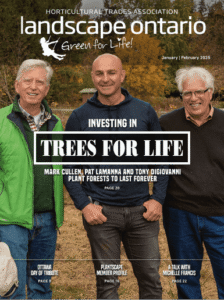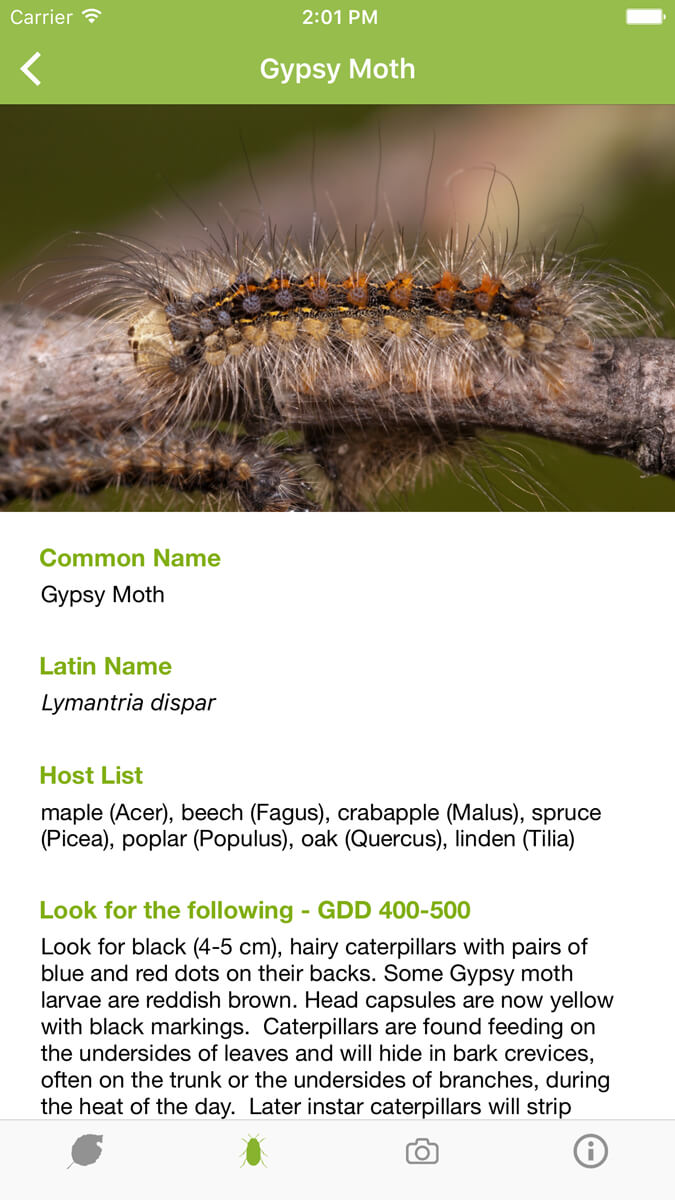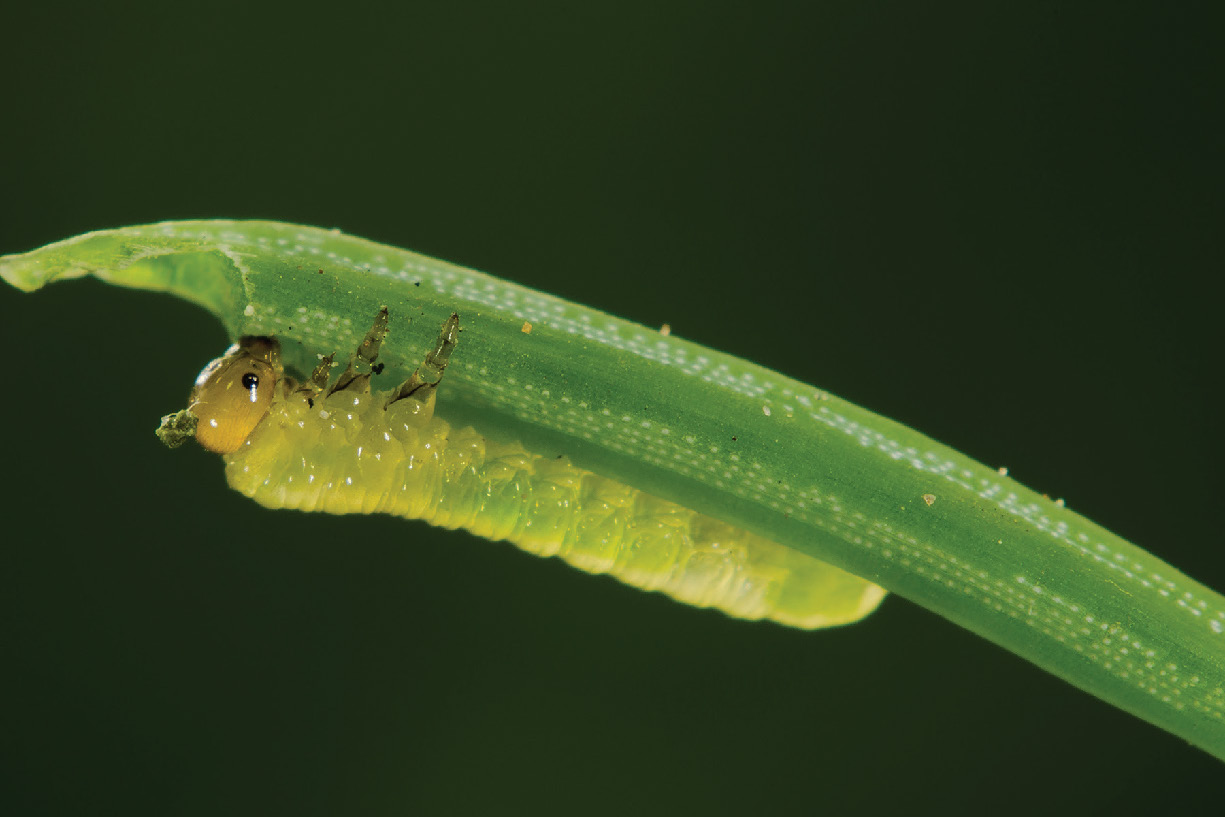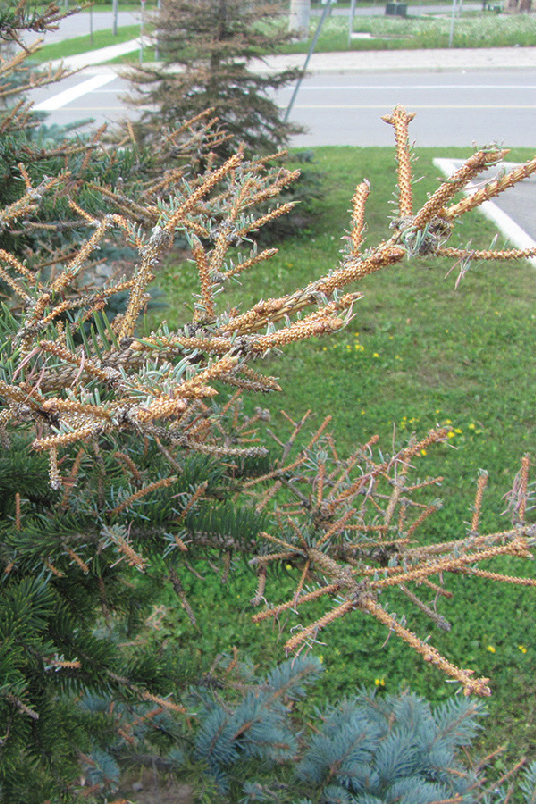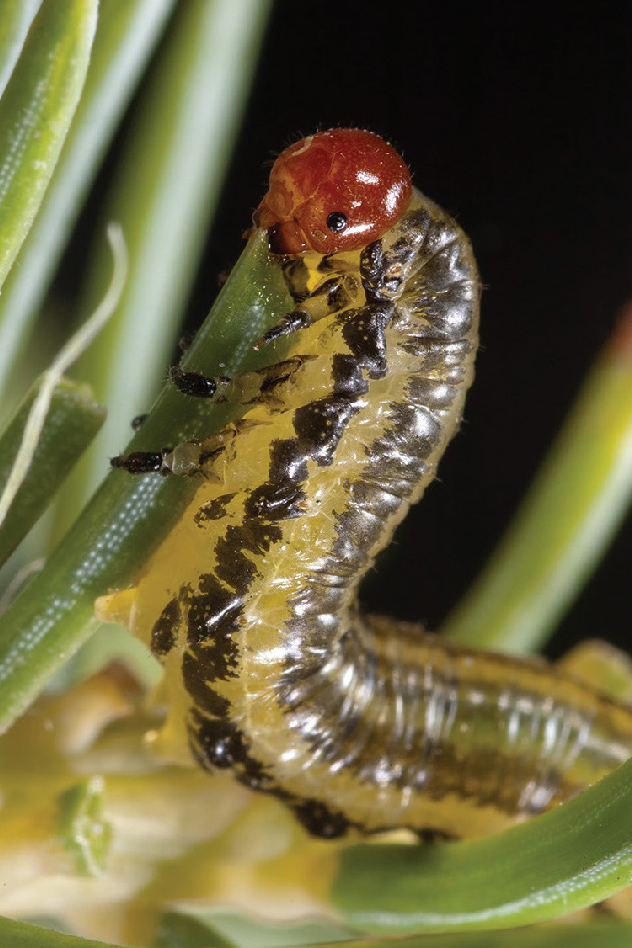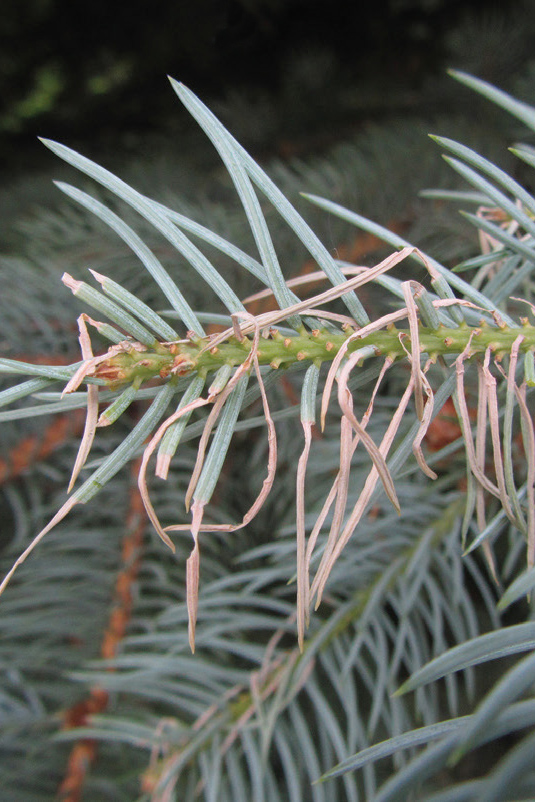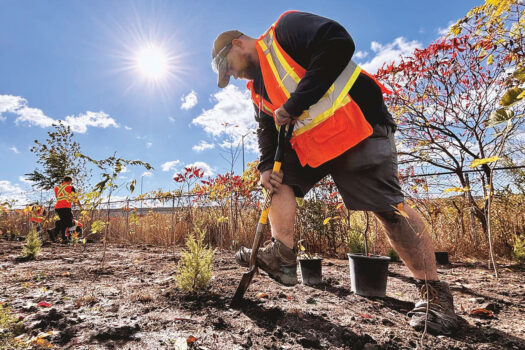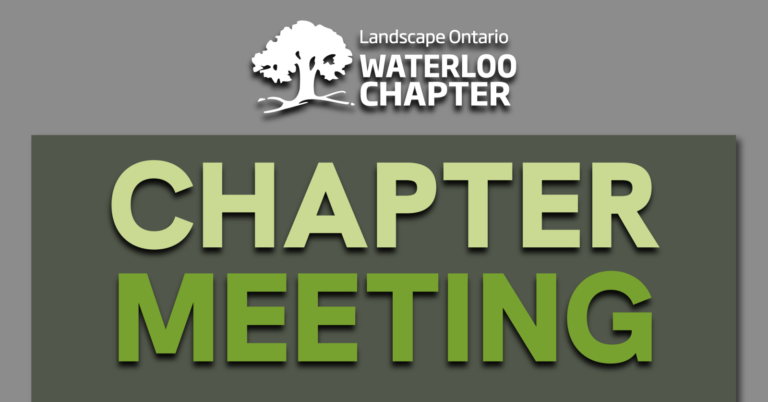Find out who’s eating your woody plants
New app can quickly diagnose pests in the landscape
Dave Cheung and Jen Llewellyn spent much of 2016 developing a scientific and photographic database to populate a brand new smartphone app called BugFinder. The BugFinder app will enable nursery growers, arborists, landscapers and gardeners across the province to quickly detect and identify insect pests on woody ornamentals in the field.
Dave, co-author and app developer, is well-known to the green industry professions as author/entomologist/photographer of his unique database website called Nursery and Landscape Pests, hosted at dkbdigitaldesigns.com/clm. Co-author Jen is well-known as Ontario Ministry of Agriculture, Food and Rural Affairs (OMAFRA) Nursery and Landscape Specialist and for her blog at ONnurserycrops.wordpress.com.
Dave and Jen met back in 2007 through Dr. Steve Marshall and his Insect Systematics Lab at the University of Guelph. Their professional relationship paved the way for Dave’s Master’s thesis project that eventually became the Nursery and Landscape Pests database. Since then, the two aspired to collaborate on a more sophisticated Integrated Pest Management (IPM) tool that could fill the void in scouting resources for those working with woody plant material.
Is there an app for that?
At first, the idea of BugFinder was just a funny joke. “Jen, is there an app for that?” became an all-too-common comment in Jen’s many workshops. But after some consideration, both Dave and Jen secured technical and funding support to make the joke a reality and project “BugFinder” was born.
BugFinder was specially-designed for horticulturalists that produce or maintain woody ornamentals with visual learning styles in mind. BugFinder will help users to quickly find insect pests on woody ornamentals with a high level of certainty. The heart of the app is an extensive database of pest information. The scientific text is the result of an exhaustive literature review and is all-new content. The database includes descriptive information on how to accurately find the pest and key diagnostic information. It also includes management practices specifically developed for each life stage of the pest.
Packed with photos
BugFinder also boasts over 800 high-quality images of 82 species of insect and mite pests. It is these amazing, high-quality photos that make BugFinder very easy to use.
Users can also search the image database directly, by filtering searches based on host, life stage and even plant damage. The entire app is stored locally on your device so there is no need to worry about having a good internet connection in-the-field.
Easy to operate
To operate BugFinder, the user needs to know two things: the plant name and the time of year. The plant name can be a common name (ie: pine), or a scientific name (ie: Pinus). The time of year can be approximated using plant phenology indicators, Growing Degree Days (GDD) and calendar date range. Utilizing the extensive database, the app is then able to generate a checklist of pests to scout for, which is specific to the host and the time of year. By adding the concept of time into the database searches, the app is able to present the user with information that is more customized to their plant health situation.
One of the best things about BugFinder is the cost — it’s priceless. Users will not have to pay to download BugFinder. The co-authours are very pleased to announce BugFinder was funded entirely by Growing Forward 2 — a federal-provincial-territorial initiative. The BugFinder app will be available on the Apple App Store in mid-February and Dave and Jen will continue to improve the app as time goes by. They are also working on developing an Android version, scheduled for release in late 2017.
For more information on the BugFinder app, visit dkbdigitaldesigns.com/bugfinder.

